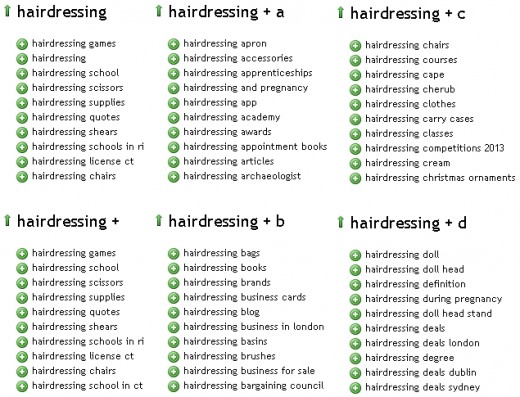Business Mind Maps - Simple, Powerful Made with Semantic Search Tools
A Mind Map is a hand-drawn or computer generated diagram designed visually summarise the links between various parts of a business model or information about a topic. Most mind maps start with a single word or text as the keyword hub located in the center of the diagram. A series of linked ideals, words, concepts is then added for form a keyword tree structure.
The more important words in the hierarchy are generally shown in larger text with the size declining for the lesser words on concept. An example of a conventional mind map is shown in the image below.
They can be hand-drawn and there is a wide variety of software tool available for generating mind maps. But there is a simpler easier way that is must more related to how a mind map is used in business.
Remember how plumbers used to have to cut threads on metal pipes to make joins? Well now it is all plastic pipe, endless fittings and glue - all the skill has gone. Basic plumbing can be done simply and easily by anyone.
Making mind maps has gone the same way. You can now use semantic search and other web tools to quickly and easily create powerful mind maps.
Importantly these modern mind maps related specifically to what your customers are searching for.
See the details below of the various tools you can use to create modern mind maps.
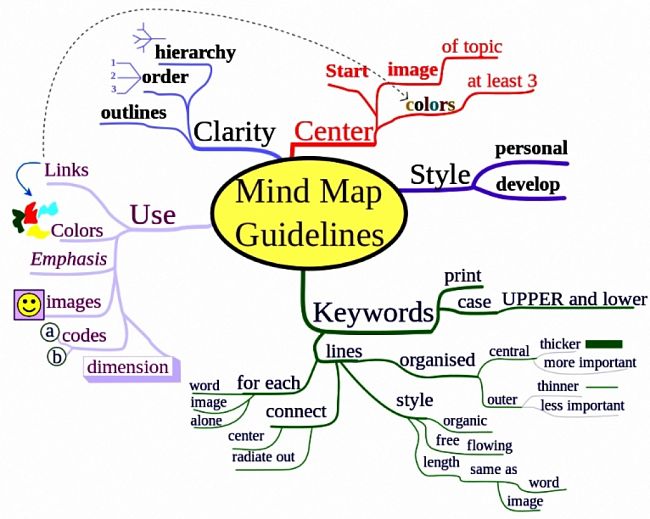
Mind Map Based on Juice Analytics
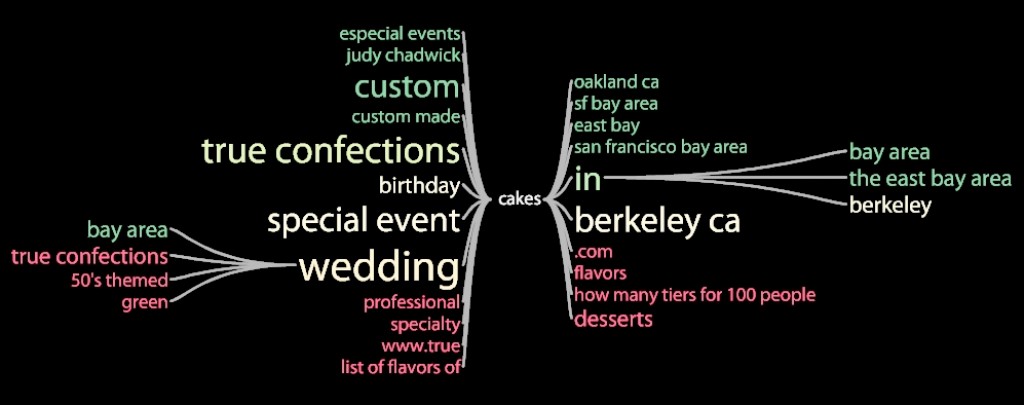
Shown above is the output generated by JuiceAnalytics.com.
This search-based Business Mind Map is linked to Google Analytics data. It shows you a map of what search terms (words and phrases) are actually driving customers to your site? There are the terms that your customers are using to find you. To generate the tree you enter a frequently use search term at the center. The image created shows the search terms that are most often used in relation to your word. What and ideal way to structure your website and your business. The size of the words is linked to their frequency of use and their color is linked to their bounce rate. When you move your mouse over a word a series of connected words is displayed.
Mind Map Generated by SenseBot Semantic Search
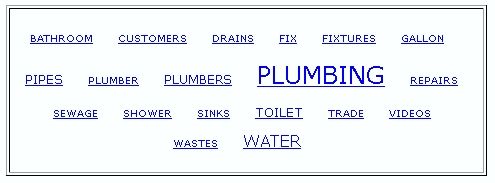
SenseBot Semantic Search Tag Map
The output from the SenseBot.net search engine is shown above for the term 'plumbing'. SenseBot produces a "Semantic Cloud" of concepts linked to the search term. The size of the text link relates to the popularity of the word in the search results. It also produces text summaries for each of the terms that are extract from the site using 'text mining'. This is very similar to the new Google Graph project aimed at adding semantic search to Google outputs. Another leader in the field of semantic search is Hakia.com. However this search tool does not produce any image of the results.
Deeperweb.com produced a 'results cloud' similar to that for Sensebot. An example is shown below for 'hair dressing'. Semantic search is the way of the future.
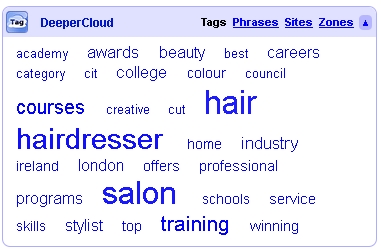
Output Produced by Soovle
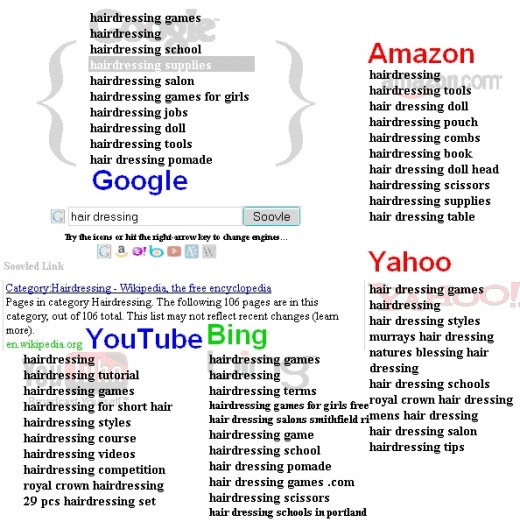
Multiple Search Engine Results
Soovle.com simultaneously shows a list of related keyword from various search engines (Google, Bing, Yahoo, Answers, Wikipedia, YouTube). This is a great way to start building a Mind Map. Other search engines can be added or substituted. There are various other search engine that produce integrated results from various search engine that are known as 'Mash-ups'
The output is shown above.
UberSearch.org is a more comprehensive tool that taps into the Google Autosuggestion tool to extract the most popular related keywords. There are about 10 phases listed for each letter of the alphabet.
A sample output is shown below.
Sample Output of Popular Related Words produced by UberSuggest
